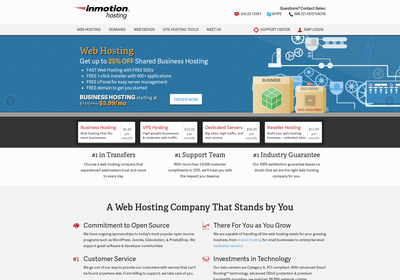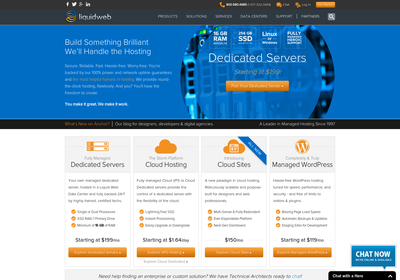FreeType Hosting: Compare Hosting
Oops! No Hosting Plans Match Your Search
You’ve selected a combination of features that none of the web hosts we profile offer. We suggest you remove your last filter or reset & start again.
Ask Our Experts
Need help with your hosting? Tell us exactly what you are looking for and we’ll do our very best to help. Please allow one working day for a response.
Please fill in all fields.
Thanks! Your request has been sent. We’ll reply within 24 hours.
Recommended Host for FreeType

 Prices in are approximate, based on current exchange rates. The host may charge you in USD.
Prices in are approximate, based on current exchange rates. The host may charge you in USD.
 Prices in are approximate, based on current exchange rates. The host may charge you in USD.
Prices in are approximate, based on current exchange rates. The host may charge you in USD.
 Prices in are approximate, based on current exchange rates. The host may charge you in USD.
Prices in are approximate, based on current exchange rates. The host may charge you in USD.
 Prices in are approximate, based on current exchange rates. The host may charge you in USD.
Prices in are approximate, based on current exchange rates. The host may charge you in USD.
 Prices in are approximate, based on current exchange rates. The host may charge you in USD.
Prices in are approximate, based on current exchange rates. The host may charge you in USD.
 Prices in are approximate, based on current exchange rates. The host may charge you in USD.
Prices in are approximate, based on current exchange rates. The host may charge you in USD.
 Prices in are approximate, based on current exchange rates. The host may charge you in USD.
Prices in are approximate, based on current exchange rates. The host may charge you in USD.What is FreeType Hosting?
If you need an open source font engine, that is streamlined and lightweight, FreeType may be just the solution. With the ability to handle TrueType, Trype 1, and OpenType, FreeType can implement font rasterization from image glyphs.
About FreeType
FreeType is an open source project licensed under both the FreeType License (FTL), which is a Berkeley Software Distribution (BSD) style license, and the GNU Public License (GPL) version 2. The software itself is a font engine. In simple language, font engines manage the process of putting text onto a screen. The software finds and renders high-quality glyph images of letters at the precise location and size needed within an application. A wide variety of applications use font engines, such as video games, Web browsers, and mobile operating systems.
Originally created in 1996 as a library to render TrueType fonts, the first version of the program was written in the Pascal programming language. In 1997, the code was ported it to C, and the Pascale version died out in 2000.
The torch of development passed to multiple people, as and soon replaced existing font drivers in the Apple Operating System, OS/2. After version 2 of FreeType was released, functionality increased but still could not access the bytecode of TrueType fonts. Eventually, in 2010, TrueType bytecode patents expired, and the interpreted for it was reactivated. The source code for FreeType also switched version control over to Git – which it is still using today.
Functionality of FreeType
Designed to be small and efficient, FreeType does not provide application programming interfaces (APIs) to perform higher-level functions, such as text layout and graphics processing. It is also not a font editor. While it is less powerful than a font service, it streamlines font file access, making it simpler for other applications. FreeType is based on modules.
The modules may be loaded on demand at runtime or linked statically to the library at compile time. Certain modules require external libraries for compressed fonts, but these may be disabled on systems that do not have those libraries.
Written in American National Standards Institute (ANSI) C programming language, FreeType requires a C or C++ compiler. FreeType has no other requirements. It can be installed on nearly any system. Other noteworthy features include, but are not limited to: a caching subsystem, ability to expand the library, an automatic hinter module, and selective module compiling. Many font formats are supported, such as TrueType Fonts (TTF) and TrueType Collections (TTC), Type 1 fonts, OpenType Fonts (OTF) and OpenType Collections (OTC), and Windows FNT.
The reasons for why FreeType was written is equally as important as how it works – the purpose of FreeType includes:
- Allowing client applications to easily access font files, choose where to store fonts, and to keep font format independent from storage methods
- Global font data can be retrieved – which includes global font metadata, encoding style, and charmaps
- Individual glyph data can be pulled quickly – including metrics, images, name and other attributes
- Access to font format-specific feature where available – SFNT tables, OpenType Layout tables, and Multiple Masters formatting
- Increasing the portability of a font library – letting fonts of multiple formats to run on an environment
- New feature extensibility – developers should be able to add new code modules to FreeType source code
- Customization – developers should be able to build a version of the FreeType library specific to project needs
- Efficient and Compact – with the ability to pick custom modules to compile and use – keeping a small footprint is key
FreeType can be used as-is for simple applications – or have new code added and compiled for a unique project goal. This flexibility has allowed FreeType to be used extensively by Apple, Java’s OpenJDK, Sony PlayStation, and the Android Operating System.
Even some Windows applications can replace the Microsoft font renderers with FreeType. To summarize – FreeType is a highly versatile font rendering library which has existed for decades and is used by nearly all of Microsoft’s biggest competitors. It is powerful, adaptive, well maintained, and allows deep control over user font libraries.
Relevance to the Web
Web hosting is not typically marketed as being optimized for running FreeType. The installation and usage of FreeType will vary significantly depending on the application you intend to use it with. For example, in some cases, you can enable FreeType support from with cPanelin your hosting account.
One reason you might need to do this is to properly display Completely Automated Public Turing test to tell Computers and Humans Apart (CAPTCHA) on your website. Anyone looking for a lightweight font engine which won’t need to handle complex tasks, but boasts compatibility with many font types, should look into FreeType.
Who uses FreeType, and what projects can use it?
FreeType as a typography tool is not geared specifically towards PostScript files like Ghostscript or Tex – instead, FreeType can be used in almost any type of application imaginable. It supports the major type formats – and can be compiled in ways which keep the footprint low – which is great for mobile devices and resource intensive applications like video games.
How is the FreeType 2 library compiled?
Documentation is available directly in the source code. The code can be compiled from command line with “GNU make,” but also is available in project files for graphical IDEs like Visual C – however, those project files might not always be up to date.
Compiling takes time and effort, but allows fine control over how the software gets used. Of course – many font viewing and control tools can be downloaded as pre-compiled software. MacType for example allows Apple fonts on Windows – but again, this is an application versus the core code for FreeType – this is a very developer heavy tool with a lot of power behind it.
FreeType Hosting Frequently Asked Questions
-
What is the difference between FreeType 1.x and FreeType 2?
FreeType 2 supports more formats than FreeType 1, which only supported the TrueType format. FreeType 2 dropped support for OpenType text layout processing, and instead moved that support to an external library with improved features. The API for FreeType 2 features significant improvements in terms of usability and performance.
-
How difficult is it to upgrade to FreeType 2?
Unfortunately, FreeType 2 is not backward compatible, so you will need to adapt your source code to make the transition to the newer version. However, the change should require very little effort, and the benefits of the newer version will likely be worth it.
-
Where can I find information on how to set up and use FreeType?
After downloading FreeType 2, you will find documentation in the documentation directory of the FreeType 2 source tree. The reference library includes information on installation, compiling, programming guides, and more. Additional information is available on the FreeType website, including a tutorial and API reference guide. If you are still unable to find the answers you’re looking for, there is a mailing list available through their website to discuss general use and applications.
-
Can FreeType create color fonts?
No. FreeType is simply a font library, with no graphical capabilities. In order to create colored fonts, you would need to utilize a graphics library to draw the FreeType glyphs in a desired color.
-
Is FreeType widely used?
Yes. FreeType is used on billions of devices around the world, including Android phones and tablets, iOS devices, Chromebooks, GNU/Linux-based computers, PlayStation devices, and printers running Ghostscript.
-
What font formats does FreeType support?
FreeType supports TrueType fonts (TTF), TrueType collections (TTC), CFF fonts, WOFF fonts, OpenType fonts (OTF, both TrueType and CFF variants), OpenType collections (OTC), Type 1 fonts (PFA and PFB), CID-keyed Type 1 fonts, SFNT-based bitmap fonts, including color Emoji, X11 PCF fonts, Windows FNT fonts, BDF fonts (including anti-aliased ones), PFR fonts, and Type 42 fonts.
-
What limitations does FreeType have?
As a font service, there are a number of applications that fall outside of the scope of FreeType. Sophisticated tasks, such as text layout operations, need to be dealt with higher-level software. FreeType can easily render glyphs on 1-bit bitmaps and 8-bit gray-level pixmaps, but other surfaces, such as 24-bit RGB pixmaps, will require a graphics library. FreeType also does not provide glyph caching, so a text-rendering sub-system is required in order to accomplish this.
-
Does FreeType support ClearType?
FreeType does not currently support ClearType (subpixel hinting), but this feature is under development. It is, however, a full-featured TrueType bytecode interpreter, which attempts to match the results of the Windows bytecode engine.
-
What character mappings does FreeType support?
All character mappings defined by TrueType and OpenType specifications are supported by FreeType. It can also synthesize a Unicode charmap from Type 1 fonts.
-
Who developed FreeType?
FreeType was originally developed by David Turner, Robert Wilhelm, and Werner Lemberg. Lemberg continues to work on FreeType as the maintainer. Continued development is led by the core developers, Alexei Podtelezhnikov and Suzuki Toshiya, along with a list of major contributors, which can be found on their website.
-
How can I contribute to FreeType?
If you have detected a bug, they have a number of demo programs you can utilize to determine whether the issues is related to FreeType or something else. If the issue persists with the demo programs, you can submit a bug report through the Savannah bug database for FreeType. They ask that you review the database before submitting to make sure the bug has not already been reported. Additionally, they welcome financial support through their Pledgie campaign.
-
Is it possible to utilize FreeType for any other programming languages?
A number of language bindings are available that allow FreeType to be used for Caml, D, Factor, Io, Perl, Python, and Ruby. Not all of these bindings are actively maintained, so they are use-at-your-own-risk. Other bindings may also be available, or may be created using the source code.
-
Can FreeType be used to edit or create fonts?
No. The FreeType library was designed to read font files only.
-
Are there any patent issues I should be aware of when using FreeType?
In early versions of FreeType, the bytecode interpreted was disabled by default, due to patent issues; however, all patents related to bytecode hinting expired as of May 2010. This feature has since been enabled by default. Currently, the code for subpixel rendering is disabled by default, due to a patent on the color filtering algorithm for Microsoft’s ClearType technology. However, similar effects can be accomplished by using a different color filter.
-
Is FreeType still being actively developed?
Yes, though they do not provide a specific release cycle, there have consistently been multiple releases each year for the past several years, and you can find information regarding their roadmap on their website.
-
Who uses FreeType, and what projects can use it?
FreeType as a typography tool is not geared specifically towards PostScript files like Ghostscript or Tex – instead, FreeType can be used in almost any type of application imaginable. It supports the major type formats – and can be compiled in ways which keep the footprint low – which is great for mobile devices and resource intensive applications like video games.
-
How is the FreeType 2 library compiled?
Documentation is available directly in the source code. The code can be compiled from command line with “GNU make,” but also is available in project files for graphical IDEs like Visual C – however, those project files might not always be up to date. Compiling takes time and effort, but allows fine control over how the software gets used. Of course – many font viewing and control tools can be downloaded as pre-compiled software. MacType for example allows Apple fonts on Windows – but again, this is an application versus the core code for FreeType – this is a very developer heavy tool with a lot of power behind it.












